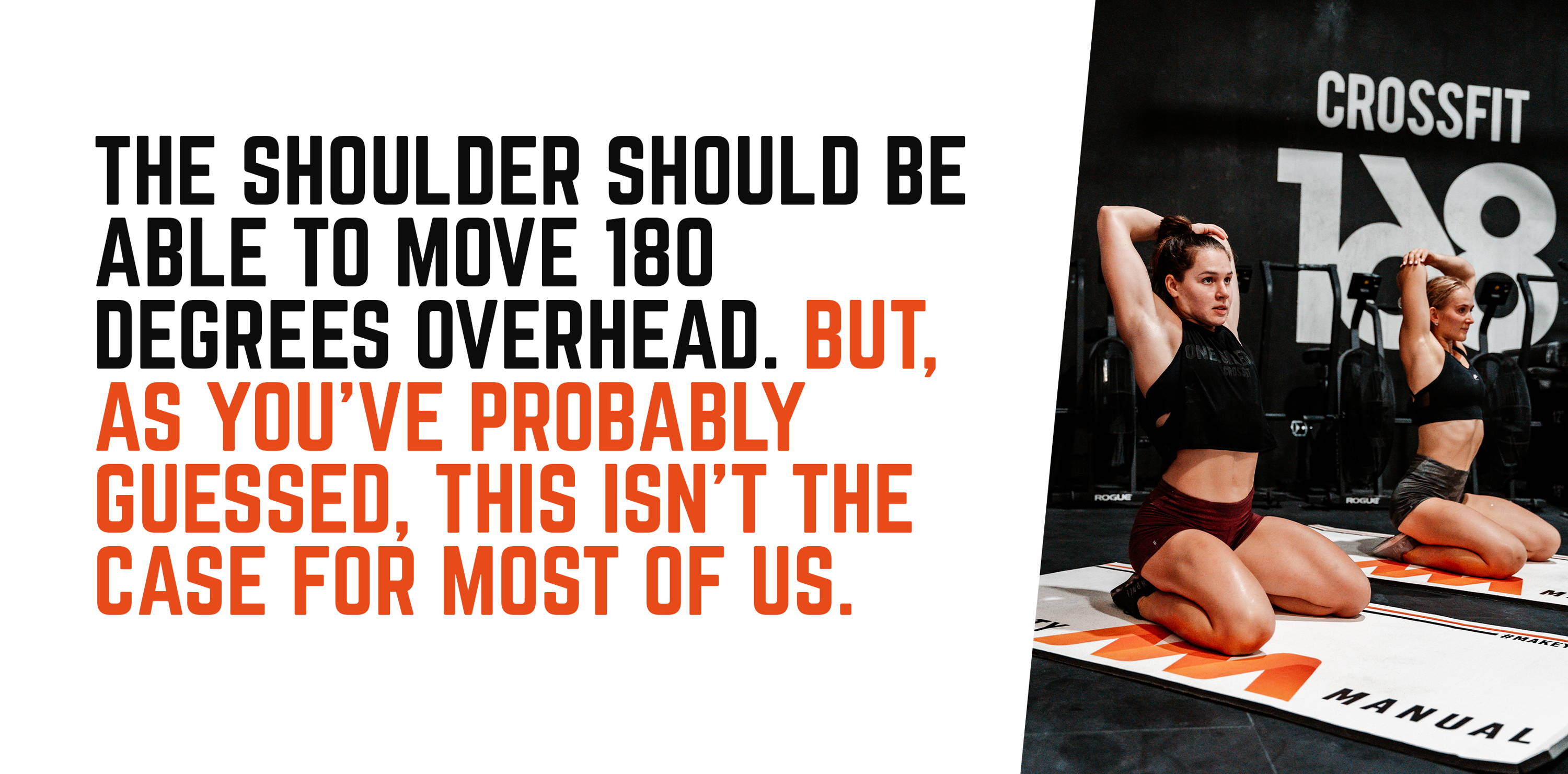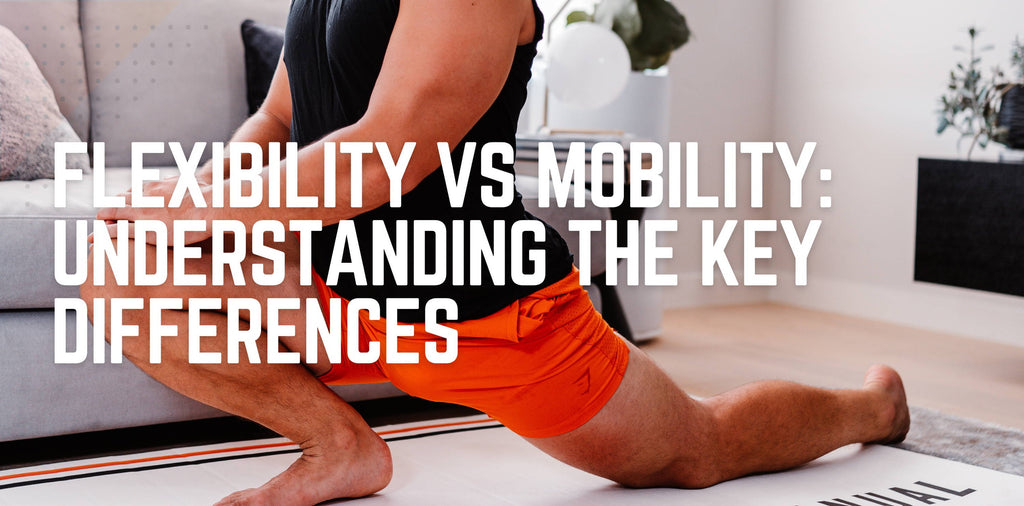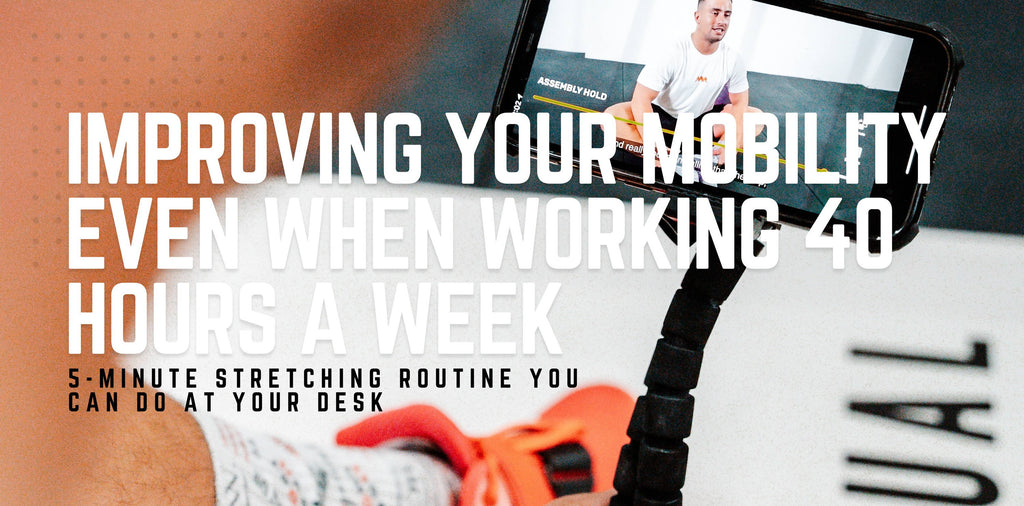Why is good Overhead Mobility so Important for a Weightlifter?

As a lifter, there's no question, you need to be mobile.
There’s such a heavy emphasis put on having great hip and ankle mobility in order to successfully complete the snatch, clean and jerk, and squat, but where’s all the talk about good overhead mobility?
After all, you wouldn’t be able to complete those snatches, jerks, and overhead squats without it.
If you’re lifting heavy weights above your head on a regular basis and you aren’t working on your shoulder mobility, I must ask… What are you doing, my friend?
About the Shoulder
Before we dive into why great overhead mobility is imperative in weightlifting, let’s take a minute to look at the shoulders and why you need to look after them to ensure that they’re working at their optimum…
The shoulders are actually the most mobile joint in the body. (Would you believe it?) They’re made up of a ball and socket joint which is held together by four small muscles of the rotator cuff and should be able to move 180 degrees overhead. As you’ve probably already realised, most of us are not able to do this, which is less than ideal.
More often than not, we don’t acknowledge how complex the shoulder joint really is. Shoulder stiffness and pain are incredibly common - regardless of whether you’re an athlete or not, and we are all guilty of taking our shoulders for granted: from movements as simple as reaching for something, to a high weight snatch.
Want To Improve Your Mobility? Get Instant Access To This Easy 5 Minute Flow To Loosen Up Anywhere
Enter your email below to get this exclusive video direct to your inbox
Your Lifting Performance
To break it down into its most simplest form: improved shoulder mobility means more effective and efficient movement patterns, which in turn, means better performance output.
When carrying out any form of physical activity, whether it’s lifting weights in the gym, or playing rugby, having limited mobility in your shoulders will make it extremely difficult for you to move the way you want to.
This isn’t only limited to sports performance, however, but also applies to everyday life too. A lack of shoulder mobility will mean that your joints and muscle health won’t be at their finest and so your body won’t be able to move and function as it should with everyday tasks.
As a lifter, you require a balance of both shoulder mobility and stability in order to meet the functional demands of your sport. Mobility and stability come as a pair - the two have to exist to a degree of equilibrium for things to work properly. The overhead position for the snatch and jerk are perfect examples of this.
“Having adequate mobility to achieve the proper position isn’t that helpful if a lifter can’t maintain the position under load. This is partly a function of strength, but also an independent factor of muscle sense etc.” (Everett, 2015).
The bottom line is: if you want to complete your snatch, jerk, or overhead squat without any issues, you need to spend dedicated time working on your overhead mobility. Due to the stress that they are under, you need to look after your shoulder health and do the utmost to ensure they’re in the best possible condition.

Risk of Injury
Now you understand the impact that good overhead mobility has on your performance, let’s look into the effects of bad shoulder mobility in relation to injury.
It doesn’t take a rocket scientist to figure it out… A lack of shoulder mobility will compromise your lifting technique which could lead to injury or place strain on other muscles.
Overhead motions, such as lifting a weight overhead, are the most stressful movements on the shoulder. The large amount of force that is generated by you as a lifter when performing these movements puts excessively high stress on the shoulder joint.
When lifting overhead, the lifter’s shoulder should be lax enough to allow excessive external rotation, but stable enough to prevent dislocations. This means that there is a need for both good mobility and functional stability, but when this balance is frequently compromised, injury can occur.
“Numerous types of injuries may occur to the surrounding tissues during overhead lifting… Muscle fatigue, muscle weakness or imbalance, and excessive capsular laxity may lead to tissue breakdown and injury” (Wilk, Meister & Andrews, 2002).
What can you do?
Having limited flexibility in your shoulders is not something you should put up with, especially if it’s slowing down your progress. And so the question is, what can you do to solve this?
Well, firstly, the most important thing to recognise when working on your mobility is that you’re never going to see results overnight. Unfortunately, there is no ‘quick fix’, and it is only through time and consistency that you will see noticeable improvements.
Performing shoulder-specific exercises and stretches can help to increase your range of motion, reduce tension, improve flexibility, and prevent injury. The shoulder stretch is also a great exercise for reducing stress and for improving circulation to the shoulder joint and muscles.
There are plenty of reasons why shoulder mobility is important, but the easy answer is that your shoulders are involved in just about every upper body movement. Ensuring full mobilisation, including both flexibility and full range of motion, is key for maintaining peak functionality with your weightlifting.
Do as much mobility work each day as you can, consistently over a long period of time, and you will better your mobility and stabilise your overhead position.
If you’re interested in learning more and looking to improve your overhead mobility for the benefit of your lifting, check out the Lifter’s Mobility Manual here. This is our 40-day protocol which has been designed specifically for lifters to help them improve their mobility for the benefit of their sports performance.


